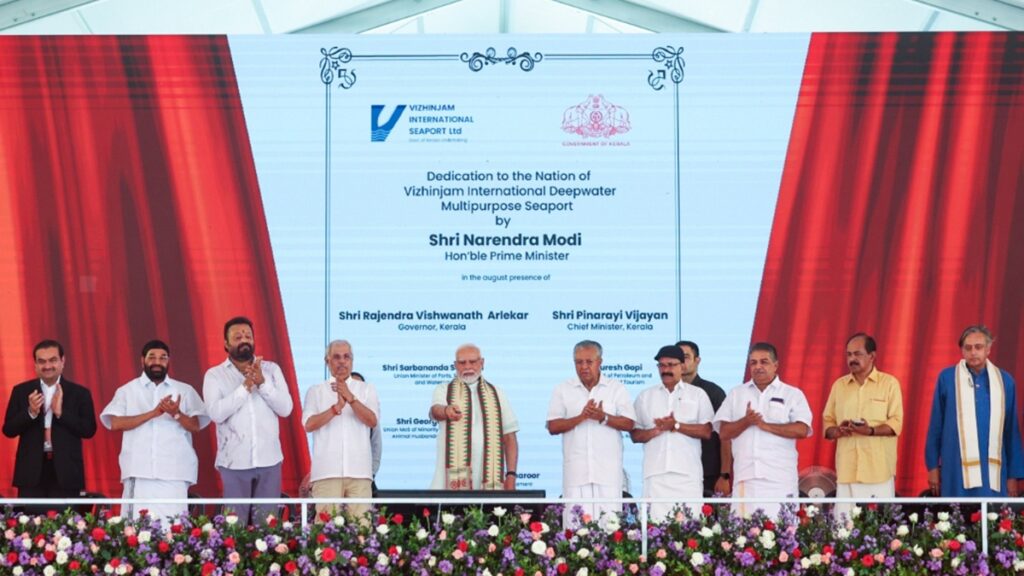Prime Minister Narendra Modi inaugurating the Vizhinjam Deep Water Multipurpose Cottage in Kerala on Friday.
Prime Minister Narendra Modi on Friday inaugurated the Vizhinjam Deep Water Multipurce Cipport in Thiruvananthapuram, Kerala and dedicated it to the country. Vizhinjam is India’s first dedicated transpiration and semi-automatic port. This seport has been created by Adani Ports and Special Economic Zone Limited (APSEZ). On this occasion, PM Modi said that Vizhinjam International International Dipwater Multipurce Cipport has been constructed at a cost of Rs 8,800 crore. The current capacity of this transmission hub will increase three times in the coming time.
The world’s large cargo ships will be able to come easily
The Prime Minister said that the world’s large cargo ships will be able to come here easily. Till now 75% of India’s transpirations were done at ports outside India. This has caused huge revenue loss to the country. Now this situation is going to change. Now the country’s money will be used for the country. The money that went abroad will bring new economic opportunities for the people of Kerala and Vizhinjam.
Origin of Vizhinjam Port Project
The idea and efforts to establish a port in the deep sea in Vizhinjam began in 1991. Over the years, several attempts have been made to start the project, but it faced several challenges, including security concerns, legal disputes related to bid and lack of investors’ interest. In August 2015, the Kerala government signed an agreement with Adani Ports and SEZ Limited (APSEZ) to develop Vizhinjam International deep water port under the Public-Private Partnership (PPP) model. This was an important step towards realizing the long -term approach of the world -class port in the region.
Selection of adani group
Following unsuccessful efforts of 1995, 2004, 2008 and 2010, the Kerala government in 2014, recognizing the independent financial viability of the project, structured the project with VGF assistance from the Government of India and adequate financial assistance from the GOK. Adani Ports emerged as the only selected bidder and was awarded the project in 2015. The agreement gave Adani a 40 -year concession for the construction, operation and transfer of the port, which provided for 20 years of expansion.
Current status and strategic importance
The port began testing operations in July 2024, with its first Madarshiship, San Fernando. In September 2024 and April 2025, it welcomed MSC Cloud Girrade and MSC Turkas, which have been listed in the world’s ultra large container ships and the largest ships so far at an Indian port. Since the onset of operations, the port has handled over 280 ships and 6 lakh teu.
The port has a natural deep draft of about 18 meters of the coast, which does not require any capital dragging, the Vizhinjam can also host the ultra-big-generation container ships by taking advantage of its natural depth. It has India’s tallest ship-to-shore crane and is equipped with AI-operated vessel traffic management systems. Situated only at a distance of only 10 knots from the International East-West shipping route, Vizhinjam is ready to become an important transpiration hub, which will reduce India’s dependence on ports such as Colombo, Singapore and Dubai.
Expect a huge decrease in logistics cost
The port is expected to reduce the logistics cost to Indian manufacturers by 30–40%, which will increase the country’s export competitiveness. With a plan to increase capacity by 2028 to 5 million teu by 2028 with the latest technology, the port is set to play an important role in India’s maritime infrastructure.
Latest business news
